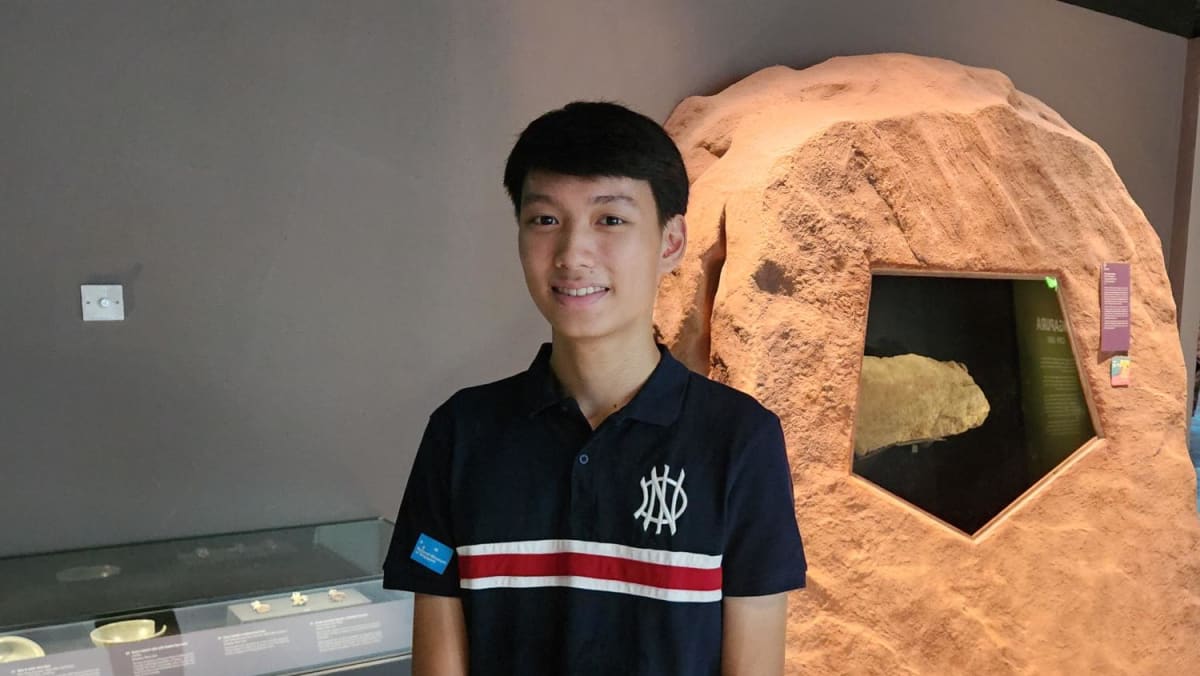SINGAPORE — The first time Mr Lee I-Shiang heard about the Singapore Stone was at a National Day Parade rehearsal in 2016, which featured a performance about a legendary warrior called Badang picking it up and flinging it towards the Singapore River.
THE CALCUTTA STONE
Discovering that the inscription on the Calcutta Stone was the most similar to the inscription on the Singapore Stone, Mr Lee then set out to compare the characters on both stones.
On the Calcutta Stone is a Kawi script written in Sanskrit and Old Javanese languages dated 1041 CE, which gives an overview of the life of legendary Javanese ruler King Airlangga of the Kahuripan Kingdom — an 11th century Javanese Hindu-Buddhist kingdom in East Java.
The inscriptions on both stones date to the Later Kawi Period, which is from 925 to 1250 CE. Early Kawi script dates from 750 to 925 CE.
However, Mr Lee found differences in both scripts such as the lack of diacritics, which are symbols around the characters such as the accent in the letter “é” of café.
“So it’s something that is weird, I’m not sure why but maybe that’s why people can’t decipher it also,” he said.
Mr Lee added that it was difficult to analyse the characters since it was like learning a completely new language.
Kawi is similar to Hindi in terms of combined consonants and vowel sounds, said Mr Lee.
“So I asked some of my Indian friends what some of these things meant and they taught me a bit about how the language (Hindi) works,” he said.
Mr Lee’s paper concludes that future work into the Singapore Stone could include a comparison of its inscription with other Later Kawi scripts from around the 10th century or later.
Identification of the ambiguous symbols would also greatly aid decryption efforts, the paper says.
Though he would be open to doing another project on the stone, Mr Lee is content with how this project has turned out for now.
“I’m really quite happy. At the start, I didn’t know what I was signing up for, I just signed up for fun,” he said.
“But in the end, I’ve learned so much about the Singapore Stone and it got published in the end. And it’s really an achievement I didn’t think I would have had.”
THE SINGAPORE STONE
The Singapore Stone is a fragment of a sandstone boulder that used to sit at the mouth of the Singapore River near the present day Fullerton Hotel.
It was first discovered in 1819 by labourers clearing forest trees at the mouth of the Singapore River. When they first discovered the stone, they were frightened by it and refused to return to the site.
About 3m high and 3m wide, the raised rim had 50 lines of indecipherable inscriptions. Many historians believe that these writings hold key information to Singapore’s ancient past.
It was later blown up in 1843 to widen the mouth of the Singapore River and create space for Fort Fullerton. What remains today is one of three fragments. The whereabouts of the other two parts are unknown.
The stone has appeared in an old Malay folklore about a slave called Badang who wished to become the strongest man.
According to the legend, Badang had caught a genie in his fishing net at the Singapore River. In exchange for its freedom, the genie granted Badang strength, but on the condition that he eats the genie’s vomit.
After doing so, Badang was able to uproot trees effortlessly. However, when a king in India heard about him, he wanted to test Badang’s strength and sent his own strongman.
The winner of the duel would be the one who could lift a large rock. The other man only managed to lift the stone before dropping it.
Badang went further. He lifted the stone and flung it towards the Singapore River, where it lay for a long time and became known as the Singapore Stone.
Collapse to view Expand to view


